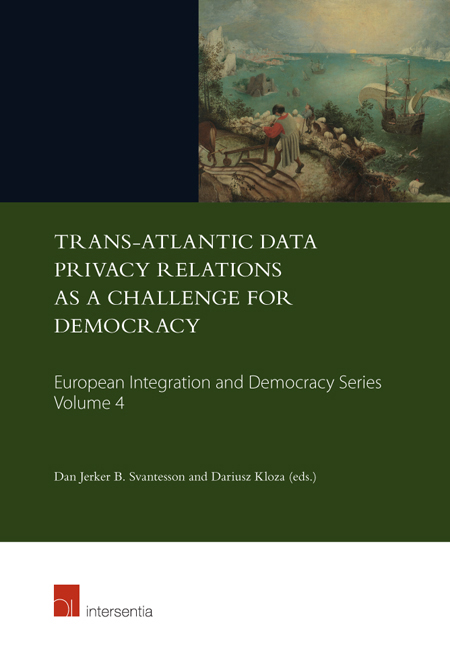Book contents
- Frontmatter
- Foreword
- Preface
- Contents
- List of Abbreviations
- PART I PRIVACY AND …
- SECTION I PRIVACY AND TRANSBORDER FLOWS OF PERSONAL DATA
- INVITED COMMENTS
- SECTION II PRIVACY AND INTERNATIONAL TRADE
- INVITED COMMENT
- SECTION III PRIVACY AND TERRITORIAL APPLICATION OF THE LAW
- 10 Extraterritoriality in the age of the equipment-based society: do we need the ‘use of equipment’ as a factor for the territorial applicability of the EU Data Protection Regime?
- 11 Jurisdictional Challenges Related to DNA Data Processing in Transnational Clouds
- SECTION IV PRIVACY AND CRIME
- INVITED COMMENTS
- SECTION V PRIVACY AND TIME INVITED COMMENTS
- PART II THEORY OF PRIVACY
- PART III ALTERNATIVE APPROACHES TO THE PROTECTION OF PRIVACY
- INVITED COMMENT
- CONCLUSION
11 - Jurisdictional Challenges Related to DNA Data Processing in Transnational Clouds
from SECTION III - PRIVACY AND TERRITORIAL APPLICATION OF THE LAW
Published online by Cambridge University Press: 29 September 2018
- Frontmatter
- Foreword
- Preface
- Contents
- List of Abbreviations
- PART I PRIVACY AND …
- SECTION I PRIVACY AND TRANSBORDER FLOWS OF PERSONAL DATA
- INVITED COMMENTS
- SECTION II PRIVACY AND INTERNATIONAL TRADE
- INVITED COMMENT
- SECTION III PRIVACY AND TERRITORIAL APPLICATION OF THE LAW
- 10 Extraterritoriality in the age of the equipment-based society: do we need the ‘use of equipment’ as a factor for the territorial applicability of the EU Data Protection Regime?
- 11 Jurisdictional Challenges Related to DNA Data Processing in Transnational Clouds
- SECTION IV PRIVACY AND CRIME
- INVITED COMMENTS
- SECTION V PRIVACY AND TIME INVITED COMMENTS
- PART II THEORY OF PRIVACY
- PART III ALTERNATIVE APPROACHES TO THE PROTECTION OF PRIVACY
- INVITED COMMENT
- CONCLUSION
Summary
INTRODUCTION
Genetic research has the potential to change how we diagnose, prevent and treat medical conditions, by making the diagnosis more precise and the prevention and treatment more personalised However, such research cannot be carried out without the collection, use and disclosure of sensitive data – our DNA Furthermore, to be effective, such research currently depends on DNA data being shared across borders and processed in cloud computing arrangements.
Thus, genetic research is global, but it is not regulated similarly across the world In this chapter, we examine the jurisdictional issues that arise in both private, and public, international law, where DNA data is stored or processed in transnational cloud computing arrangements Further, the broad contours of a potential approach to dealing with those issues will be canvassed First, to set the scene for that discussion, we will commence with a brief discussion of what types of data we are dealing with here, what they are used for and the role cloud computing plays in the processing.
Our aim is modest We do not aim to be exhaustive on any one topic Rather, by providing a brief introduction to both DNA data processing and to the legal issues, we aim to make the presentation accessible to a diverse audience, hopefully making this chapter a suitable starting point for anyone considering researching in detail the cross-section of transnational DNA databases and international law.
DNA IN THE CLOUDS – THE BASICS
HOW AND WHY DNA DATA IS USED
The human genome refers to an individual human being's complete set of DNA In the current European Data Protection Directive 95/46/EC, genetic data is commonly considered health data, which is characterised as sensitive personal data In the upcoming European Union General Data Protection Regulation (EU) 2016/679, genetic data is explicitly regulated as a special category of data alongside, inter alia, health data We will return to the legal regulation in section 4 below.
Genomic data is a unique identifier Furthermore, an individual can be identified even by very little DNA data.
- Type
- Chapter
- Information
- Publisher: IntersentiaPrint publication year: 2017
- 3
- Cited by



